Ken Rogoff on demonetisation in India
It's the hottest topic in India. Be it an auto rickshaw driver or a vegetable vendor or a top company executive or a chess player, everyone is talking about demonetization. Ken Rogoff is not only a world renowned economist and a professor at Harvard, he is also a chess grandmaster. He is the author of the book Curse of Cash. With such credentials, Rogoff is the perfect person to speak about Modi's decision. Along with Rogoff's views we also have opinions by an economic analyst and a Chartered Accountant to give you a comprehensive round-up of the current scenario.
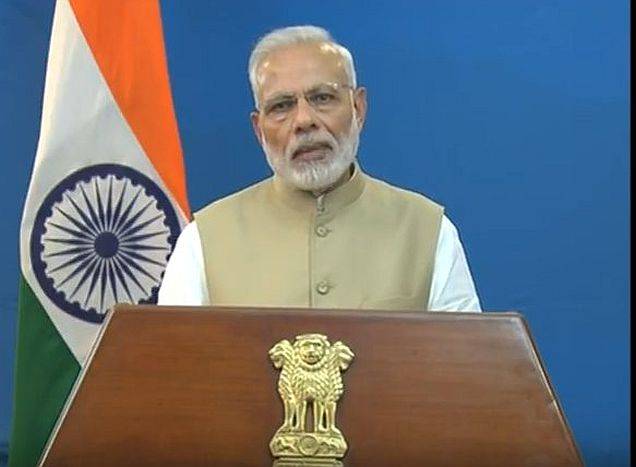
It was on 8th November 2016 that we all eagerly sat before our TV sets to listen to our PM Shri Narendra Modi. He had something important to say. We were all in dark about the content of the information. Within 10 minutes he dropped a bombshell. From mid-night of 9th November, he said, all currencies of the denomination of Rs 500/- and Rs 1000/- will no longer be valid currencies. In one sentence he took 85% of the total currency out of circulation. As per RBI the total value of currency that would go out of circulation was approximately Rs 14.50 lakh crores. In short Rs 14.50 lakh crores worth of currency was demonetized.
At the stroke of midnight
Prime minister Modi's announcement came to an end around 9 p.m. People still had about three hours to get rid of the their 500 and 1000 rupees notes which would become illegal at the stroke of midnight. This was the scene in Ghatkopar, Mumbai in the last one hour before 8th of November came to an end.
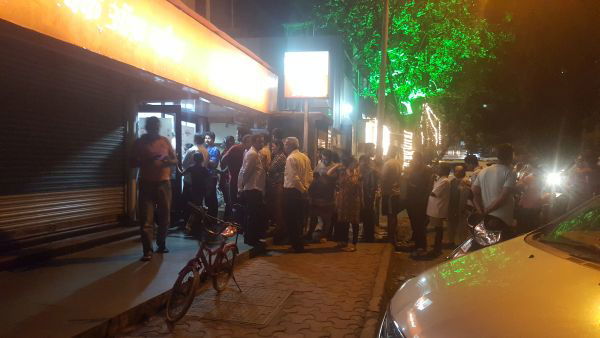

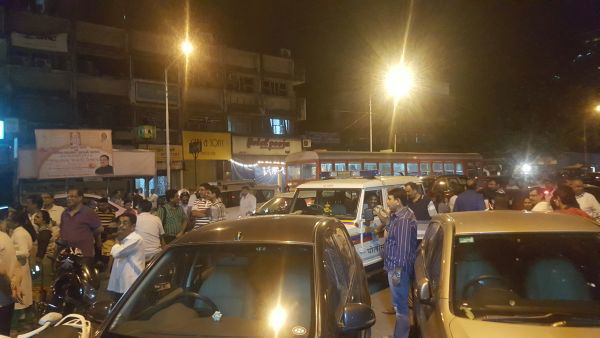

Ken Rogoff - economist + grandmaster
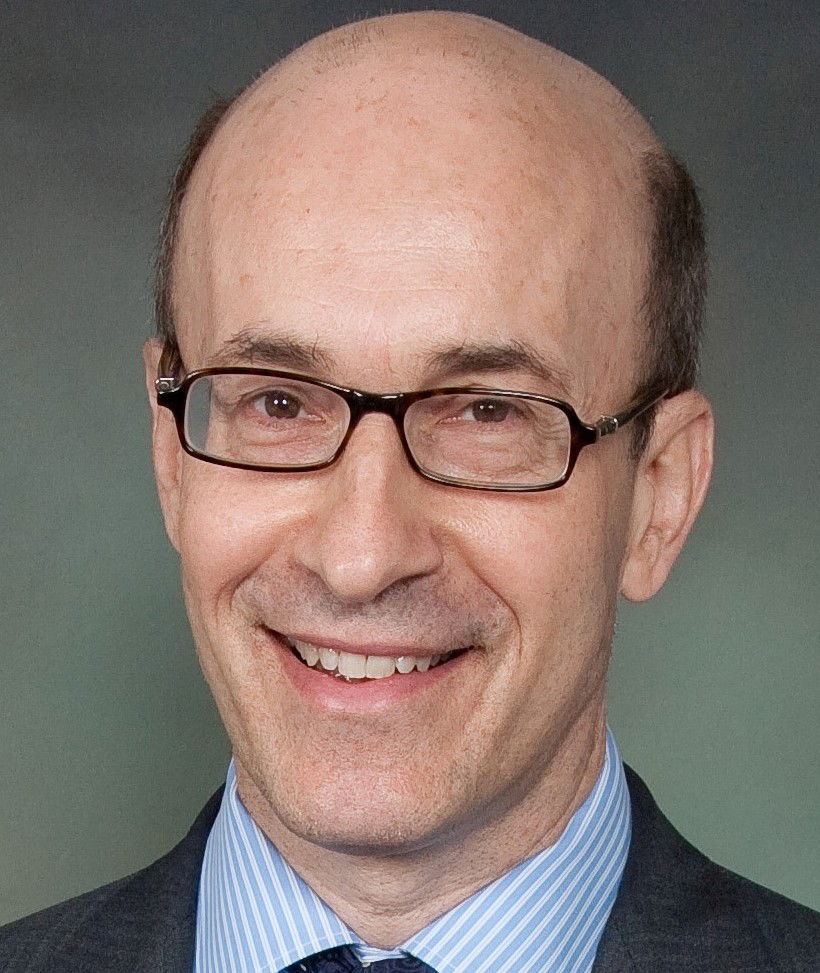
Ken Rogoff is an American economist and Thomas D. Cabot Professor of Public Policy and Professor of Economics at Harvard University. He is also the author of the book curse of cash, which deals with phasing out most paper money to fight crime and tax evasion. And believe it or not Ken Rogoff is also a chess grandmaster!

Ken Rogoff on India's decision of demonetization
MOTIVATION SAME AS IN THE CURSE OF CASH
Is India following the playbook in The Curse of Cash? On motivation, yes, absolutely. A central theme of the book is that whereas advanced country citizens still use cash extensively (amounting to about 10% of the value of all transactions in the United States), the vast bulk of physical currency is held in the underground economy, fueling tax evasion and crime of all sorts. Moreover, most of this cash is held in the form of large denomination notes such as the US $100 that are increasingly unimportant in legal, tax-compliant transactions. Ninety-five percent of Americans never hold $100s, yet for every man, woman and child there are 34 of them. Paper currency is also a key driver of illegal immigration and corruption. The European Central Bank recently began phasing out the 500 euro mega-note over these concerns, partly because of the terrorist attacks in Paris.
BUT SETTING AND IMPLEMENTATION IS VASTLY DIFFERENT
On implementation, however, India’s approach is radically different, in two fundamental ways. First, I argue for a very gradual phase-out, in which citizens would have up to seven years to exchange their currency, but with the exchange made less convenient over time. This is the standard approach in currency exchanges. For example this is how the European swapped out legacy national currencies (the deutschmark and the French franc) during the introduction of the physical euro fifteen years ago. India has given people 50 days, and the notes are of very limited use in the meantime. The idea of taking big notes out of circulation at short notice is hardly new, it was done in Europe after World War II for example, but as a peacetime move it is extremely radical.
In general, a slow gradual currency swap would be far less disruptive in an advanced economy, and would leave room for dealing with unanticipated and unintended consequences. One idea, detailed in The Curse of Cash, is to allow people to exchange their expiring large bills relatively conveniently for the first few years (still subject to standard anti-money-laundering reporting requirements), then over time make it more inconvenient by accepting the big notes at ever fewer locations and with ever stronger reporting requirements.
Second, my approach eliminates large notes entirely. Instead of eliminating the large notes, India is exchanging them for new ones, and also introducing a larger, 2000-rupee note, which are also being given in exchange for the old notes.
MY PLAN IS EXPLICITLY TAILORED TO ADVANCED COUNTRIES
The idea in The Curse of Cash of eliminating large notes and not replacing them is not aimed at developing countries, where the share of people without effective access to banking is just too large. . In the US, only 8% of the population is unbanked. In Colombia, the number is closer to 50% and, by some accounts, it is near 90% in India. Indeed, the 500 rupee note in India is like the $10 or $20 bill in the US and is widely used by all classes, so India’s maneuver is radically different than my plan. (That said, I appreciate that the challenges are both different and greater, and the long-run potential upside also much higher.)
Indeed, developing countries share some of the same problems and the corruption and counterfeiting problem is often worse. Simply replacing old notes with new ones does have a lot of beneficial effects similar to eliminating large notes. Anyone turning in large amounts of cash still becomes very vulnerable to legal and tax authorities. Indeed that is Modi’s idea. And criminals have to worry that if the government has done this once, it can do it again, making large notes less desirable and less liquid. And replacing notes is also a good way to fight counterfeiting.
Will Modi’s plan work? Despite apparent huge holes in the planning (for example, the new notes India is printing are a different size and do not fit the ATM machines), many economists feel it could still have large positive effects in the long-run, shaking up the corruption, tax evasion, and crime that has long crippled the country. But the long-run gains depend on implementation, and it could take years to know how history will view this unprecedented move.
THE GOAL IS A LESS-CASH SOCIETY NOT A CASHLESS ONE
In The Curse of Cash, I argue that it will likely be necessary to have a physical currency into the far distant future, but that society should try to better calibrate the use of cash. What is happening in India is an extremely ambitious step in that direction, of a staggering scale that is immediately affecting 1.2 billion people. The short run costs are unfolding, but the long-run effects on India may well prove more than worth them, but it is very hard to know for sure at this stage.
The above article is republished from Princeton University blog
Ken Rogoff's views on 11th of December
Ken Rogoff wasn't impressed with the way demonetization was carried out. The implementation was poor according to him. This is what he wrote in Financial times, a month after Prime Minister Modi's decision.
 What lessons can be learned from India’s disastrous and still continuing demonetisation? At a stroke, Mr Modi decommissioned 86 per cent of India’s currency supply in an economy where 90 per cent of transactions are in cash. The rationale, the Indian people were told, was to fight rampant corruption, tax evasion and crime, as well as to deal with a surge in counterfeit notes being used to finance terrorist activities.
What lessons can be learned from India’s disastrous and still continuing demonetisation? At a stroke, Mr Modi decommissioned 86 per cent of India’s currency supply in an economy where 90 per cent of transactions are in cash. The rationale, the Indian people were told, was to fight rampant corruption, tax evasion and crime, as well as to deal with a surge in counterfeit notes being used to finance terrorist activities.
These are laudable goals, but, as events have unfolded, it is now clear that the design and execution of the Indian exchange has been deeply flawed. Most fundamentally, the Reserve Bank of India simply had not printed nearly enough new notes to replace the old ones. It will take months to fill in the gap. In the meantime, commerce is crippled in huge swaths of the economy where wages and suppliers are typically paid in cash, and where the vast majority of people do not have access to electronic payments.
While there may still be significant long-term benefits to Mr Modi’s radical
policy, the short-term results have been catastrophic, probably knocking 1-2 per cent off growth in gross domestic product, with those on lower and middle incomes and the poor bearing a particularly heavy burden.
Developing economies probably should not think about phasing out cash until they have sufficient electronic payments infrastructure. Mr Modi’s India has taken substantial steps to this end, including by cataloguing biometric data for almost a billion people, after which they are entitled to heavily subsidised basic accounts. But well over half have not yet set up accounts (even if they are now rushing to do so) and 300m people have yet to be catalogued. I have proposed phasing out large bills slowly, over 5-7 years rather than overnight. India’s approach more closely parallels Mr Henry’s pioneering plan, in which he hoped that by leaving only a short timeframe for conversion, the US Internal Revenue Service and the justice department would be able to nail people who acquired their stashes of dollars illegally.
The problem, as the Indian example illustrates, is that there is just too much collateral damage. The Rs.500 note, especially, is widely used by ordinary Indians. Moreover, India did not have a large note to start with, and it is in fact replacing the Rs.1,000 note with a Rs.2,000 note. In addition, as already mentioned, India did not have nearly sufficient stock of new currency on hand to replace the old, throwing the cash economy into seizure.
In an economy profoundly crippled by tax evasion and corruption, India’s radical demonetisation may yet have positive long-run effects. In a sense, Mr. Modi’s broader goal is to change the mindset of India. If followed up with a broad range of actions to fight corruption and to enhance
financial inclusion, his monetary revolution may yet succeed. But for now,
most Indians can only hope the government will soon have printed enough
currency for the country to return to some sense of normality.
The above article is republished from the Financial Times
Ramkrishna Kashelkar - a financial analyst

The Indian government’s decision to demonetise high value currency notes, particularly when the economy wasn’t facing any immediate threat, is unprecedented in modern economic history. Considering its monetary as well as geographic scope it was bound to have unintended consequences, apart from the stated objectives of checking circulation of counterfeit and black money.
The loopholes in the entire monetary system have become vividly visible like never before. A good chunk of illicit cash was changed into portable assets like gold, diamonds, premium wrist watches, Bhutanese currency ‘Nu’ among others for hefty commissions. Bank accounts, which were dormant, or owned by poor people were used to deposit such cash. Similarly, local body taxes, electricity bills were paid, in many cases, several years of arrears. Businessmen paid their workers several months of salary in advance.
Some tried to bribe their way through corrupt bank staff as well as cash transporters. While the banks are being forced to ration issue of new currency notes to the general public, the daily news flow showed large cash caches being discovered across the country. This underlined the fact that the Indian banking system is not as secure as it was believed to be.
Various sources suggest the black money hoarders ended up paying hefty 30%-50% commissions or bribes to convert their stash in legal currency. Several distributed their cash to relatives, friends or acquaintances. Whether the government will be able to nab those black money hoarders is not yet clear, but one thing is certain, that the black money within the country is now more equitably distributed.
With over 80% of the cash already returned to the banking system, there is less than Rs 3 lakh crore still left outside the system. Hence, there is still some chance that a chunk of this fails to turn up by 30 December, which is the deadline for depositing cash in the bank accounts. Any cash not tendered back, will be a net gain to the government. At the same time, a large part of the cash-only business activity will get covered by the tax net. This will broaden the tax base and also boost the government’s revenues. Another incidental benefit of the exercise will be a push to less cash and ultimately a cash-less economy, where there will be better transparency. Whether these benefits will exceed the costs of demonetisation and whether such an extreme step was justified will remain a hot topic of debate for months to come.
Dharmen Shah - a chartered Accountant
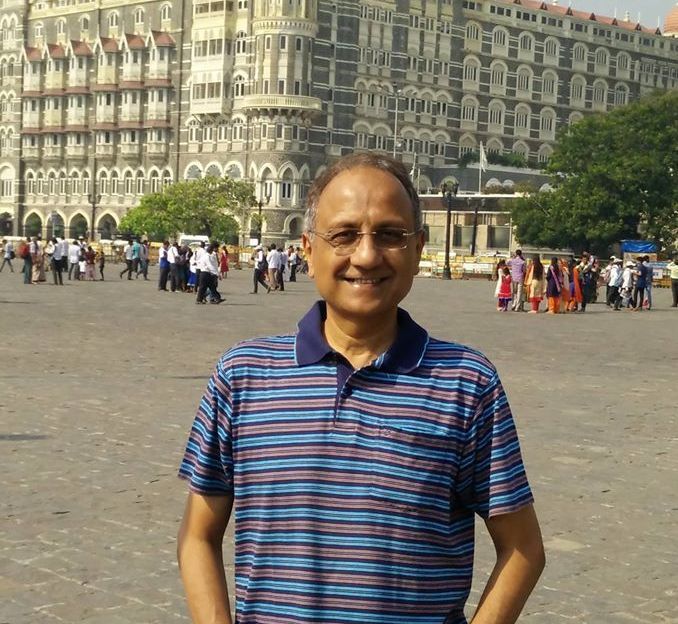
Opinions of Chartered Accountants are in great demand as they can look beyond the obvious matters on the surface. They know the various laws and loopholes in the system and their views can let us know what are the technical difficulties faced by the public due to demonetization. Here is what Dharmen has to say:
PM Modi spelt out the purpose of demonetization:
- To eliminate fake currency in circulation in the country
- To stop terrorist funding
- To eliminate the unaccounted money (black) in the economy
- To reduce corruption.
Theoretically what is stated above is possible to be achieved. Purpose (1) & (2) have been more or less been achieved. Purpose (3), to have an economy with no unaccounted funds is not possible for various reasons. Firstly only a small portion of black money is in cash. A large portion is in benaami property. Secondly election funding & spending as it is done now requires tons of unaccounted cash and lastly agricultural income is still 100% tax free irrespective of how much one earns. As long as structural reforms in these areas are not brought about it will be difficult to eliminate black economy. Purpose (4) is a result of two factors. Firstly it is the mindset, which will take time to change and secondly our other commercial laws are such that it gives discretionary power to the authorities thereby leading to corruption.
No one can challenge or doubt the intention of the prime Minister. At one stroke, these four serious issues were sought to be tackled. No matter how good the idea or the intention is, it needs to be properly implemented to ensure its effectiveness. It seems there have been some leakages. Most citizens have been inconvenienced by restrictions on exchange & deposit of old currency and withdrawal of new currency. Most ATMs have been dysfunctional because the size of the new currency notes is different and therefore ATMs require recalibration. There has been shortage of new currency ever since 10th November 2016. However, now the restriction on withdrawal of new currency from one’s own account is being gradually removed. The government has promised that honest citizens have nothing to worry. Reasonable deposit of old currency cash in one’s own account is not likely to be questioned. Citizens have been inconvenienced, however this is a short term pain which is likely to end soon (50 days from 10th Nov according to PM).
There has been gross misuse of powers by some bankers who favoured selected few influential and high profile customers by parting with large quantity of new currency. There has been misuse of bank accounts opened under Jana Dhana Yojana. These accounts have been used to deposit third party cash. Before government could realize several thousands of crores have been withdrawn in new currency. As on today (12/12/16) it is said that over 11 lakh Crore out of 14.50 lakh crore of old currency has been deposited and over 4 lakh crore of new currency has been withdrawn.
However, I feel that all is not lost. Government has the necessary mechanism to track such gross misuse and bring to book the errant bank officials and black marketeers . The government has very high stakes in ensuring the success of this scheme. This should be one sufficient reason to ensure that necessary follow up steps will be taken to plug the leakages sooner than later. I feel that demonetization is not the end of the story. It is just a beginning and the Government is likely to follow this up with several further steps which will make demonetization more effective.
As an immediate concern, the economy is likely to slow down as citizens will postpone their “not for necessity” expenses to a later date. Wasteful expenses will be curbed. We can already see around us curtailment in marriage expenses, foreign trips, spending on branded expensive goods and jewellery.
However for an honest citizen this step of the government is one taken in his interest. Lets keep our fingers crossed and hope for the best. As I write this, the Government has proposed new voluntary scheme “ Taxation and investment Regime for Pradhan Mantri Garib Kalyan Yogna, 2016” to provide opportunity to taxpayers to declare undisclosed income - The scheme requires payment of tax, Surcharge and penalty @50% and blocking at least 25% of the undisclosed income in Interest free deposit for 4 Years with immunity from certain other laws.
Further Reading:
A fascinating 42-minute talk by Ken Rogoff in 2014, that you should reserve time to watch. The lecture is an early version of what Rogoff has laid out in his new book: that paper money has brought on a great deal of problems for humanity, and that possibly the time come for governments to start phasing out paper currency (cash), except perhaps for small-denomination notes, coins, or both.
Article by Professor Gita Gopinath in Project Syndicate
ChessBase News: Ken Rogoff and the curse of Cash

